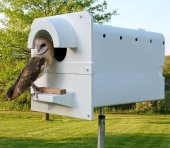











 1
1




Living in Anjou , France,
For the many not for the few
http://www.permies.com/t/80/31583/projects/Permie-Pennies-France#330873

 1
1




List of Bryant RedHawk's Epic Soil Series Threads We love visitors, that's why we live in a secluded cabin deep in the woods. "Buzzard's Roost (Asnikiye Heca) Farm." Promoting permaculture to save our planet.








"You may never know what results come of your action, but if you do nothing there will be no result”
How Permies.com Works
Be Nice




Living in Anjou , France,
For the many not for the few
http://www.permies.com/t/80/31583/projects/Permie-Pennies-France#330873




Idle dreamer















Idle dreamer




Tyler Ludens wrote:I would try making some hideouts for them out of pallets or something similar up on blocks, so they have a low place to run under. This won't guarantee the slow and stupid won't get eaten, but you will be selecting for the quick and observant.















































How permies.com works
What is a Mother Tree ?




 this way ) and thus are more used to small spaces Owl tend to swoop to the ground and I would expect them to need more space.
this way ) and thus are more used to small spaces Owl tend to swoop to the ground and I would expect them to need more space.
Living in Anjou , France,
For the many not for the few
http://www.permies.com/t/80/31583/projects/Permie-Pennies-France#330873




 So what harm is it if they live beneath netting . Since the little darling are not the best flyers around why not grow something up the netting that might feed the birds too .
So what harm is it if they live beneath netting . Since the little darling are not the best flyers around why not grow something up the netting that might feed the birds too .Living in Anjou , France,
For the many not for the few
http://www.permies.com/t/80/31583/projects/Permie-Pennies-France#330873




"People may doubt what you say, but they will believe what you do."















"People may doubt what you say, but they will believe what you do."

|
This. Exactly this. This is what my therapist has been talking about. And now with a tiny ad:
Freaky Cheap Heat - 2 hour movie - HD streaming
https://permies.com/wiki/238453/Freaky-Cheap-Heat-hour-movie
|



